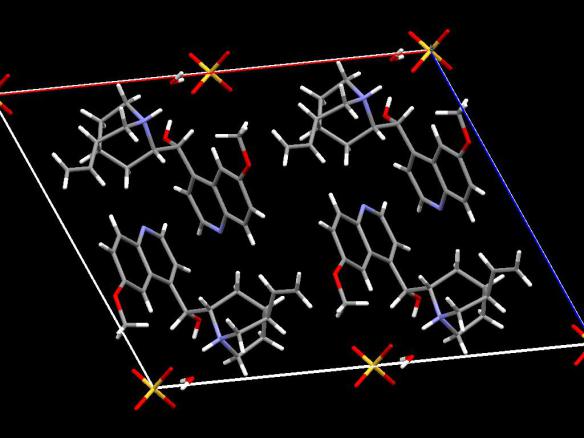A molecule from trees – Quinine
As it's National Tree Day this Sunday (27th July), our two posts this weekend are on very useful materials that we've got from trees! First up is quinine.
What does it look like?

Image generated by the Mercury crystal structure visualisation software http://www.ccdc.cam.ac.uk/Solutions/CSDSystem/Pages/Mercury.aspx
What is it?
Quinine is a molecule that was first discovered by the Quechua people of Peru, who distilled it from the bark of the cinchona tree and used it as a muscle relaxant. But it has als been used since the days of the Romans as an antimalarial. Quinine can readily dissolve into water (creating tonic water) but was always very bitter. Later, people were to add gin to tonic water – making it a lot more pleasant to drink - and a mixture that is still very much enjoyed to this day.
One of the interesting properties of quinine is that it fluoresces under UV light, hence can be used to make glow-in the dark jellys!
Where did the structure come from?
The structure we've featured is actually a quinine sulfate hydrate (as quinine is soluble in water, it often forms crystals with other smaller molecules) and was determined by Mangwala Kimpende and Van Meervelt






